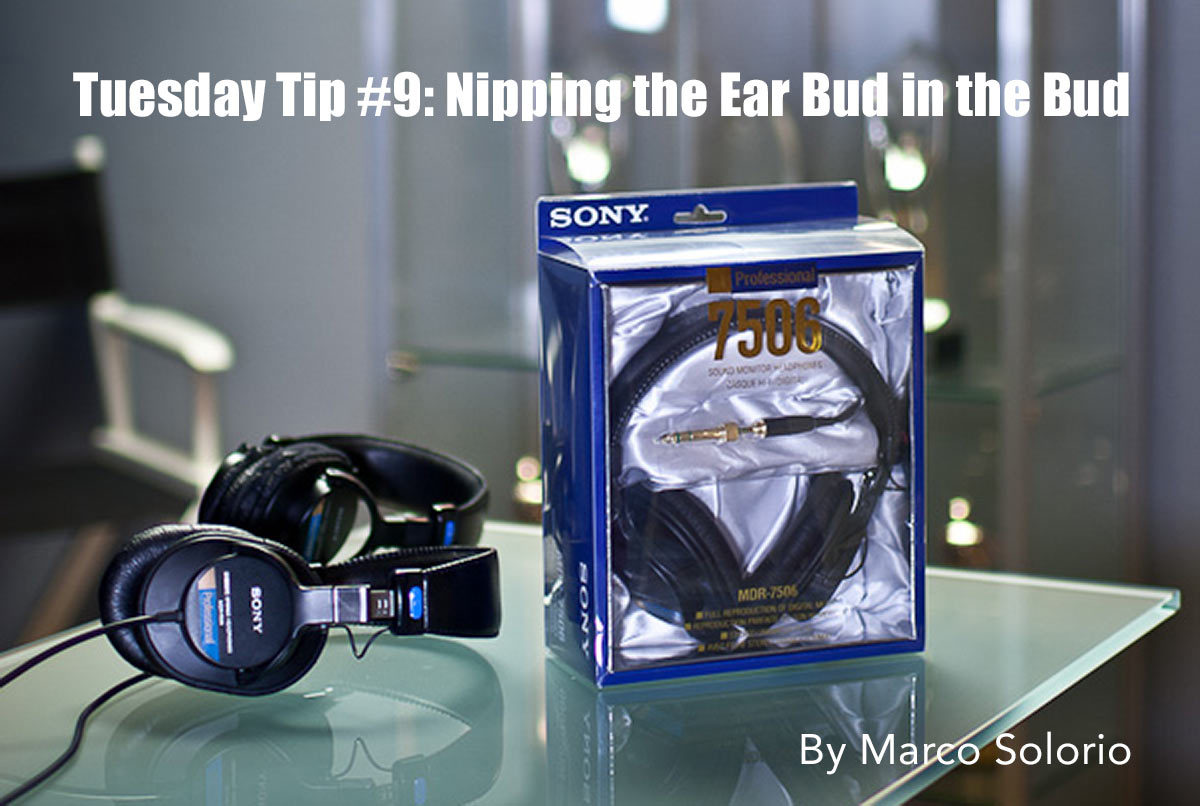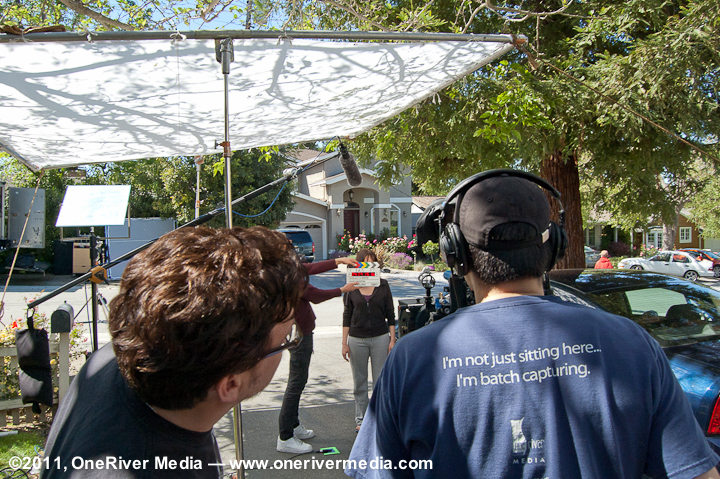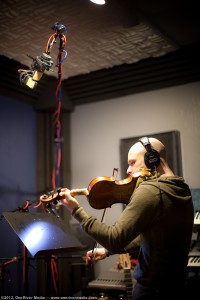
Let’s face it, mobile devices have taken over our lives! We use them day in and day out for everyday use. But sometimes, I see these devices cross over into the production world, namely, headphone ear buds. Sure it’s easy, gives you sound, and doesn’t weigh anything, but let’s be realistic… iPhone style ear buds just aren’t the right tool in a production environment.
Now, I don’t want to make this sound like a snobbery blog post, because it truly isn’t. What this blog post is about is using the right tools for the job at hand. And sometimes, using the correct tools doesn’t mean having to rob a bank to do so.
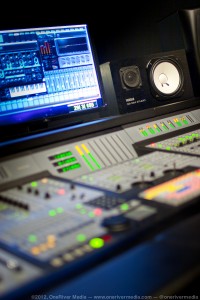
In the monitor (speaker) world, the Yamaha NS10M is the world reference monitor, shown here in OneRiver Media’s audio control room. The Sony MDR-7506 is no different in the reference headphone world.
Using proper reference headphones is both professional and affordable. So what exactly are reference headphones? Just like reference monitors (speakers), they’re used as a reference in which to make critical judgment in sound, no matter what location or studio you are in. Maintaining sonic consistency across different environments is an important factor to not overlook.
Here at OneRiver Media, we have a pair of Yamaha NS-10M reference monitors in our audio control room. You will find these exact monitors in just about every recording studio on the planet. Seriously. It’s not because they sound great (in fact, many people feel they don’t sound that great at all), but because anyone walking into a studio can use these monitors and have an equal/constant reference to go by, knowing the characteristics of these monitors.
Reference headphones are no different. For reference headphones, I started using Sony MDR-V6 headphones in the 1980’s, and in the 1990’s switched to the new MDR-7506 model (same design, driver, and pretty much overall sound, just that the two are wired differently in regards to their grounding). The MDR-7506 are also way more readily available, even in some retail stores if you’re in a bind. Bottom line though, is that production audio people (on location and in the studio) around the world depend on these headphones everyday, and as such, have been the standard to go by. When you see other manufacturers copy the design of the MDR-7506, you know the original is the real deal. And don’t fool yourself, get the real deal!
But again, just because the Sony MDR-7506 is a standard, doesn’t mean they sound standard. They sound great. Plus they help keep your ears isolated from external sound, making it easier to concentrate on the sound you’re recording; ear buds can’t do that. Ear buds usually have a pretty bad low frequency fall-off, so any rumblings below, say 200Hz will get missed on ear buds; not the case with 7506’s. Better to fix the sound on set than dealing with it in post, which might cost you money or if anything, cost you time.
We actually gave a pair of 7506’s to a long-time producer client of ours this last March for his birthday. He absolutely loves them. We wanted to make sure that when he was at home reviewing our video progress, that he did so with headphones that matched with what we’re listening to here at the studio.
At around $100 it’s really kind of no brainer. Walking on set with ear buds just looks bad and sounds bad. Sporting a set of cans like the MDR-7506 wont get you funny looks and will ensure the sound you’re recording is clean and accurate.
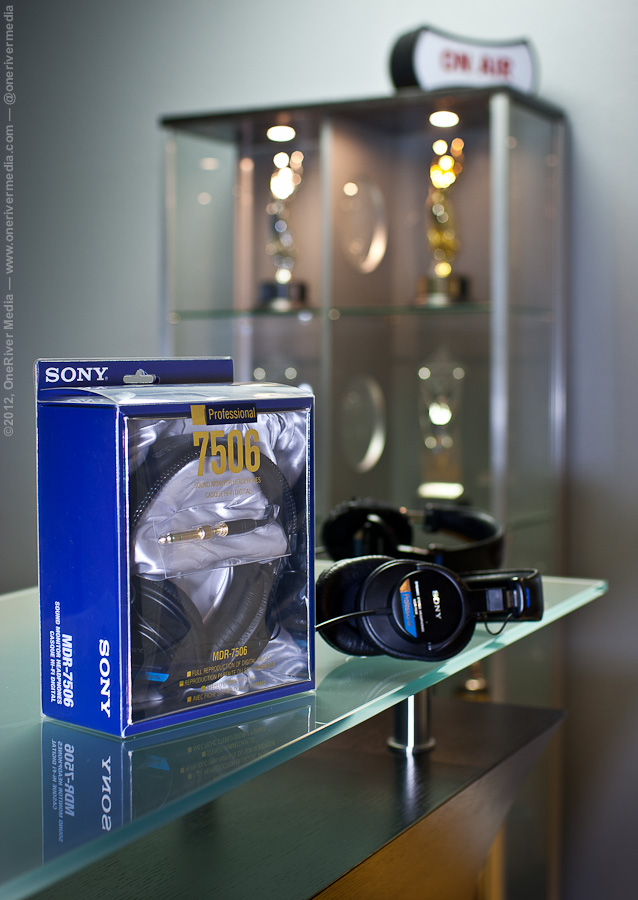
Yep, we have a collection of Sony MDR-7506 headphones, and even a couple of old MDR-V6 headphones in the facility if you look hard enough.
Share this post
Article © OneRiver Media, including applicable photographs. All rights reserved. Article and its contents shall not be copied or reprinted without the expressed written approval of OneRiver Media.
FCC Disclaimer - Links from this article might go to affiliate links to B&H and/or Amazon (not much different than the ads you see in YouTube ads, but more focused). Visiting these links (or buying products from the links) cost you nothing additional and may in turn help us pay for the cost of hosting these free articles we write. These articles take an enormous amount of time (in most cases, weeks and months) to research, draft, write, edit, rewrite, and shoot custom photography/video for. In no way do these affiliate links cover the cost of all of that, so any help these links can provide is a huge help to us to continue to offer free content to our readers.
